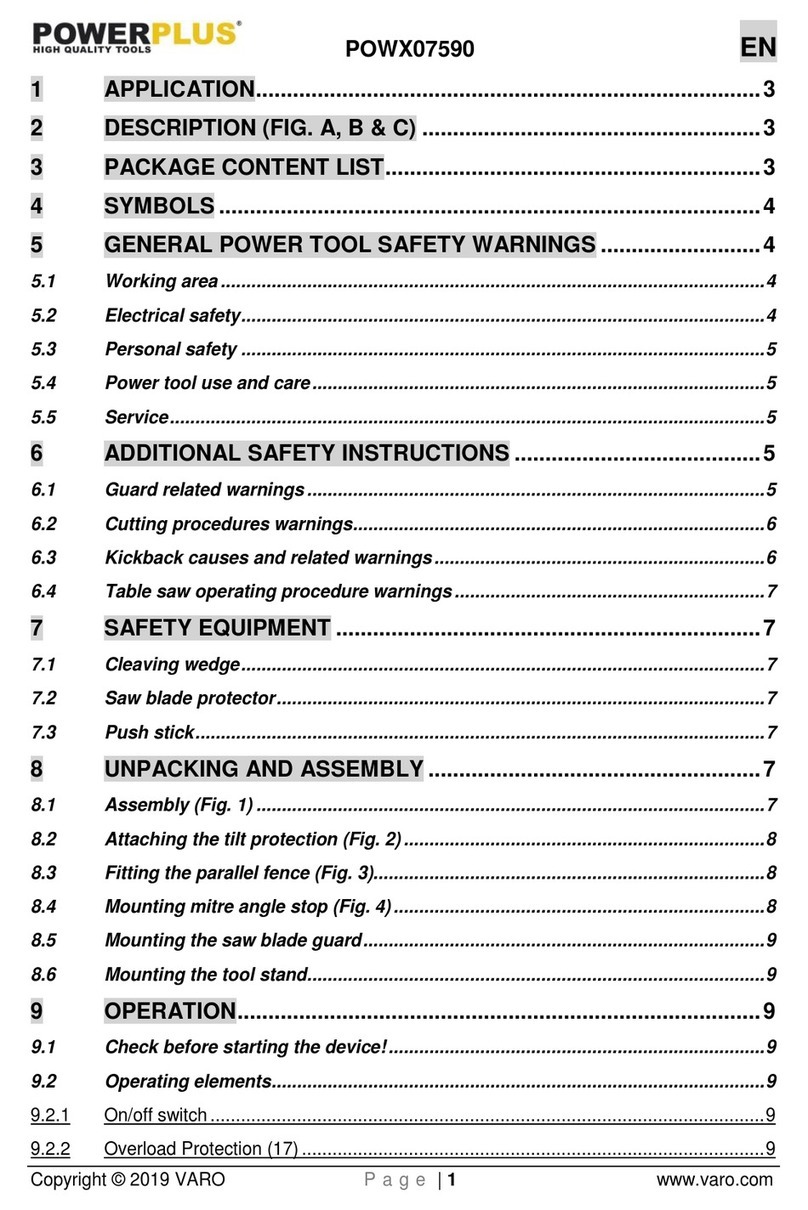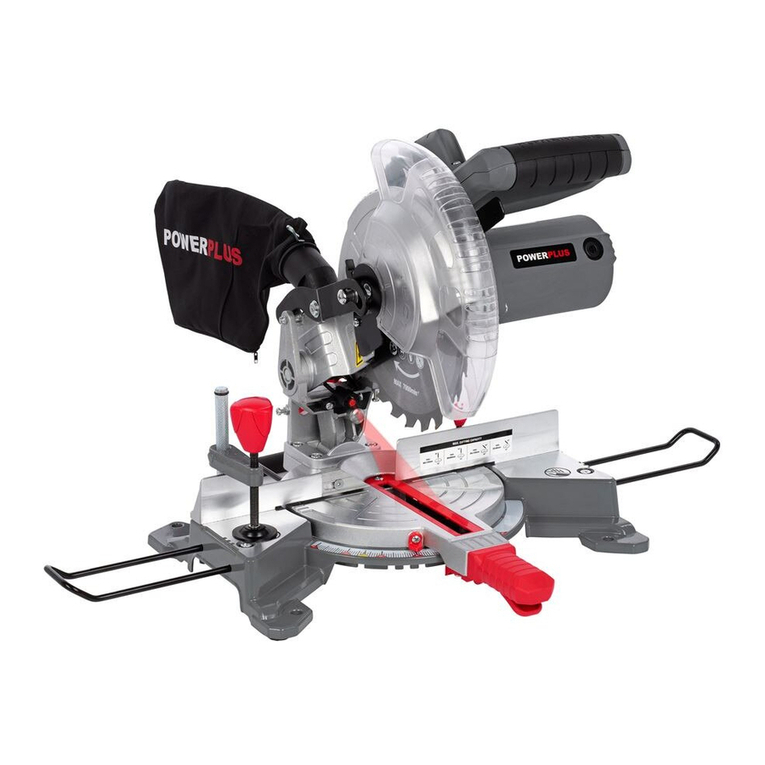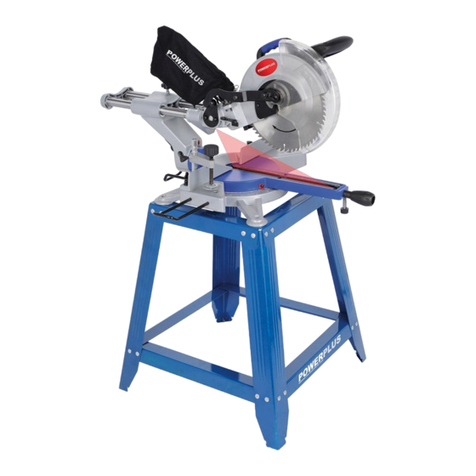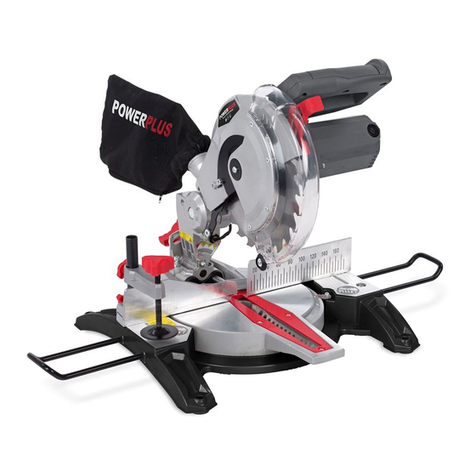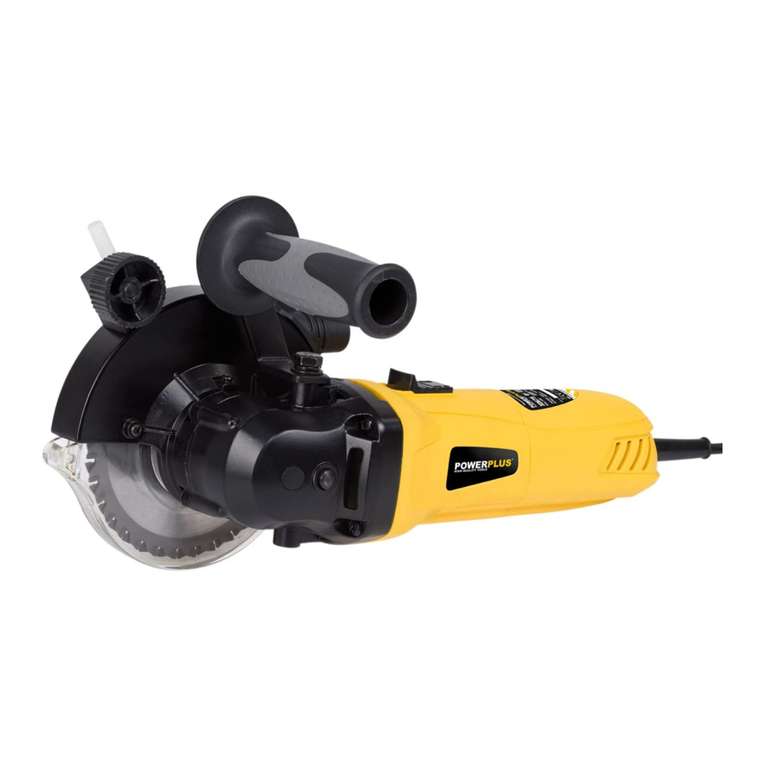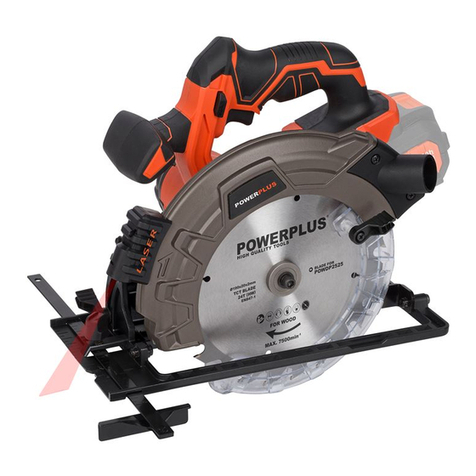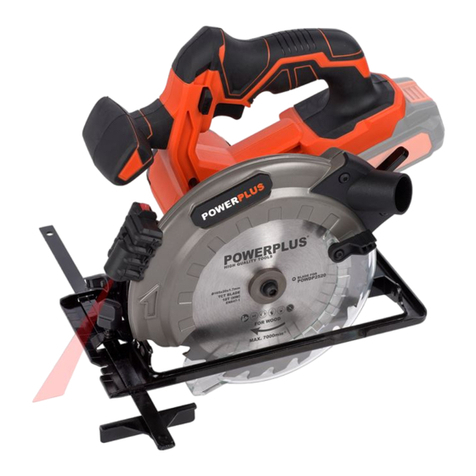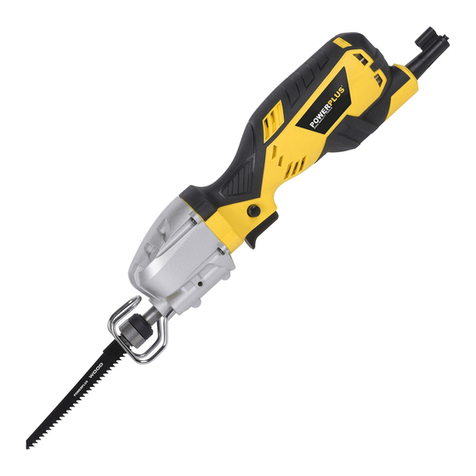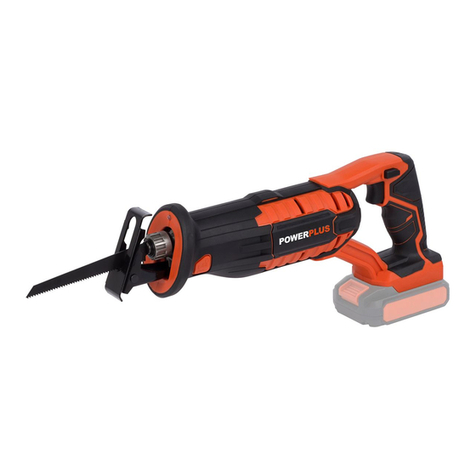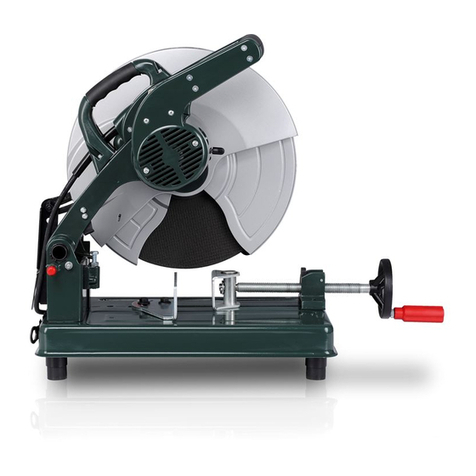
POWX0760 EN
Copyright © 2014 VARO NV P a g e | 10 www.varo.com
guards are spring loaded so it returns to its original position when the cut is completed and the
handle is raised. The top blade guard falls flat on the table surface after workpiece has passed
under it. NEVER DEFEAT OR REMOVE THE LOWER BLADE GUARDS, THE SPRING
WHICH ATTACHES TO THE LOWER BLADE GUARD, OR THE TOP BLADE GUARD except
for the note below.
In the interest of your personal safety, always maintain each blade guard in good condition.
Any irregular operation of the guards should be corrected immediately. Check to assure spring
loaded return action of the lower blade guards. NEVER USE THE TOOL IF THE LOWER
BLADE GUARD, SPRING OR THE TOP BLADE GUARD ARE DAMAGED, FAULTY OR
REMOVED except for the note below. DOING SO IS HIGHLY DANGEROUS AND CAN
CAUSE SERIOUS PERSONAL INJURY.
NOTE:
There are the following exceptions for removal of guards. Only when using in the table saw
mode, the lower blade guard (8) is removed. Only when using in the Mitre saw mode, the top
blade guard (11) is removed.
If any of these see-through blade guards becomes dirty, or sawdust adheres to it in such a
way that the blade is no longer easily visible, unplug the saw and clean the guards
carefully with a damp cloth. Do not use solvents or any petroleum-based cleaners on the
plastic guard.
If the lower blade guard is especially dirty and vision through the guard is impaired,
proceed as follows. Raise the handle fully. Remove the saw blade (Refer to the section
“Installing or removing saw blade”). Raise the lower blade guard while pushing the lever to
the left. With the lower blade guard so positioned, cleaning can be more completely and
efficiently accomplished. When cleaning is complete, reverse procedure above and secure
bolt. In the same case for the top blade guard as above stated, push in the button at its
front to the surface top and remove the top blade guard. After cleaning, always reinstall it
securely.
If any of these blade guards becomes discolored through age or UV light exposure,
contact our service center for a new guard.
DO NOT DEFEAT OR REMOVE GUARDS.
8.2 Maintaining maximum cutting capacity (Fig. 7)
This tool is factory adjusted to provide the maximum cutting capacity for a 255 mm saw blade.
When installing a new blade, always check the lower limit position of the blade and if
necessary, adjust it as follows:
CAUTION:
When making this adjustment, unplug the tool.
First, unplug the tool. Lower the handle completely. Use the wrench to turn the adjusting bolt
until the periphery of the blade extends slightly below the top surface of the turn table at the
point where the front face of the guide fence meets the top surface of the turn table. With the
tool unplugged, rotate the blade by hand while holding the handle all the way down to be sure
that the blade does not contact any part of the lower base. Readjust slightly, if necessary.
CAUTION:
After installing a new blade, always be sure that the blade does not contact any part of the
lower base when the handle is lowered completely. Always do this with the tool unplugged.
This tool can be used with or without the lower limit by shifting the lower limit stopper as
shown in the figure. (Fig. 8 - 15)
To use the tool without the lower limit, turn the stopper end counterclockwise. Use in this
position is proper to cut a wide and thin workpiece.
To use the tool with the lower limit, move the stopper end clockwise. Use in this position is
proper to cut a thick workpiece.
